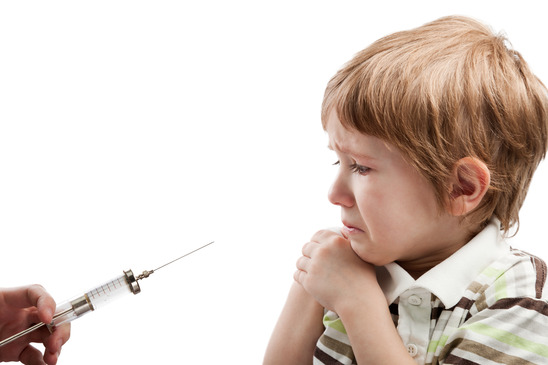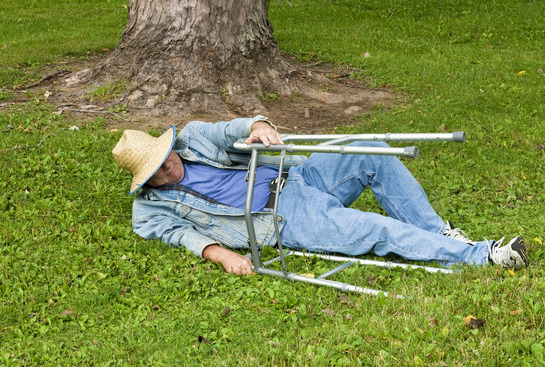|


IN THIS ISSUE |
|
This month, Better Health News talks about the spectrum of health concerns. First, children are smaller versions of adults and although they seem to have the same problems that persist in adults, they still need more kid-friendly treatments. Then, adults too need to take safety precautions because as age increases so does the risk of injury when even the slightest fall occurs. Have a comment? Or a question? Or your own editorial response you'd like to see in Better Health News? Send us an email at the address below. |
Have a question, comment, or concern? |
| Last Month | |
| This Month | |
Hospitals Not Careful with Children's Pain |
|
|
Most people would assume a hospital to be the first place to have specialized 'kid-friendly' medical procedures. After all, there's a whole division of medicine to specialize in treating and healing the pains children face. So, why are hospitals still handling kids' pain like they handle adults' pain? Recent studies have uncovered the startling pain detection methods hospitals use with children. These methods just don't take into account that kids can't communicate as well as adults. Plus, they may not find a 'grown-up' to complain about pain in the first place.
The Dos and Don'ts of Kid Hospital Care The recent study took a hard look at 3,800 children all under the age of 18. Specifically, these kids were all at pediatric hospitals, specializing in taking care of children's illnesses. On average, each patient got about 3 pain assessments during their stay. Two-thirds of patients received a pain assessment in a 24-hour period. So, what's wrong with this? Isn't that enough assessment to deal with pain properly? The problem isn't with frequency, but with quality. When the assessments themselves were evaluated, researchers found them to be variable. Inconsistent. They didn't meet the proper guidelines to correctly identify children's pain. Mainly, it was a problem of communication. During these pain assessments, most children were just asked if they were in pain. This method, called self-reporting, works well in children with developed verbal skills. However, children as young as 5 years old were just being asked. Children of this age just don't have a good enough grasp of language to tell nurses and doctors just how bad their pain is. Other pain validation methods were used, but they still didn't perform well enough to meet the accreditation guidelines.
How to Judge a Child's Pain the Right Way Young children often have trouble telling a 'grown-up' just how badly they hurt. This much is clear. However, experts agree that children as young as 3 or 4 years old can use numbered pain scales. Usually, these scales range from 0 to 10, where 0 is 'no pain' and 10 is 'worst pain'. A more understandable scale can also include cartoon faces depicting varying levels of pain. Young children don't need to understand the meaning of comparison words or other descriptive words. When using the Faces Pain Scale, all a child has to do is look at the photos and say where they fall on the spectrum. But, what about children younger than 3 or 4? Or children that have a condition that gets in the way of communication? How are health care providers supposed to evaluate pain among those who can't speak? The solution there is called the FLACC scale. This stands for Face, Legs, Activity, Cry, and Consolability. Nurses and doctors look at what a child's face and legs are doing, what kinds of movements they make in terms of squirming and shifting, what noises they make, and how much they can be affected by consoling words and touches. Once scored on the FLACC scale, nurses and doctors can derive a score from 0 to 10, just as if the child had used the faces scale.
What You Can Do as a Parent If you have a young child in the hospital with a painful condition, ask questions. Ask the nurses and medical staff how they've been evaluating your child's pain. Ask if they're using any pictures, or a numbered scale to help them understand just how badly your child hurts. And lastly, talk to your child. It will help them get through this rough time. And after all, you know your child best. You can speak for him or her, if you have to.
|
|
'Careful' Not Enough to Prevent Elderly Falls |
|
|
But later in life, a fall can have devastating consequences. After years have passed, the human body just isn't as resilient as it was at 6 years old. You might skin your knee, but that wound can take a long time to heal. If you suffer from osteoporosis or don't have enough calcium or vitamin D in your diet, a fall may lead to a broken bone. Often, falls lead to broken hips. And broken hips can lead to some painful complications. You might say that you're careful. That you won't fall because you always make sure to use the hand rail on the stairs, or take it slow getting in and out of the bathtub. But, careful might not be enough. Careful has to happen every day. A fall has to happen only once.
Why Falls Happen Here are the 10 most common reasons seniors fall:
Stop Falls Before They Happen: Old and New Ways Being careful to avoid a fall is a great start. But, taking a proactive stance towards preventing falls can make all the difference. It can be the line between disability and independence. Try these easy solutions to get yourself going on fall prevention.
But in addition to these tried and true methods, new science gives us technology that can provide early warning when it detects a potential fall coming. Dubbed 'the magic carpet,' this carpet underlay uses sensors to register and analyze walking patterns. Scientists found that just before a fall in the house, people tend to walk differently. They may stumble, shuffle, or walk erratically. Walking patterns are sent to a computer for analysis. When the algorithm detects a fall might be coming, it sends out a warning so you can take things more slowly. For all those times when 'careful' isn't enough, a little extra preparation could be a real independence saver. |
|
 |
|
 Kids aren't little adults. They're growing, learning, and changing every day. Unfortunately, kids can still suffer from the same adult diseases that scare, cripple and just plain hurt.
Kids aren't little adults. They're growing, learning, and changing every day. Unfortunately, kids can still suffer from the same adult diseases that scare, cripple and just plain hurt.
 When kids fall, usually there's not much of a problem. Maybe there's a skinned knee, but that's about it.
When kids fall, usually there's not much of a problem. Maybe there's a skinned knee, but that's about it.